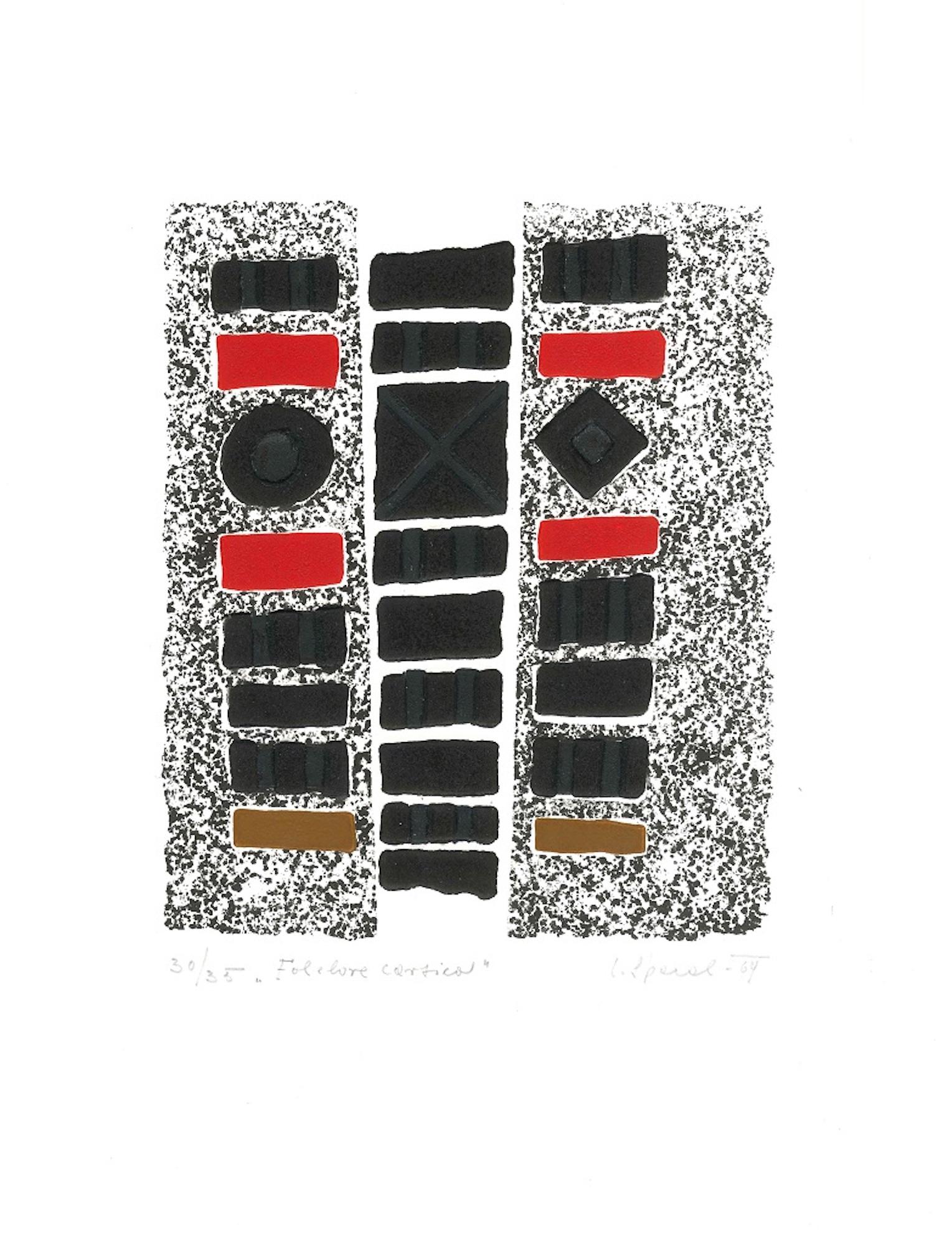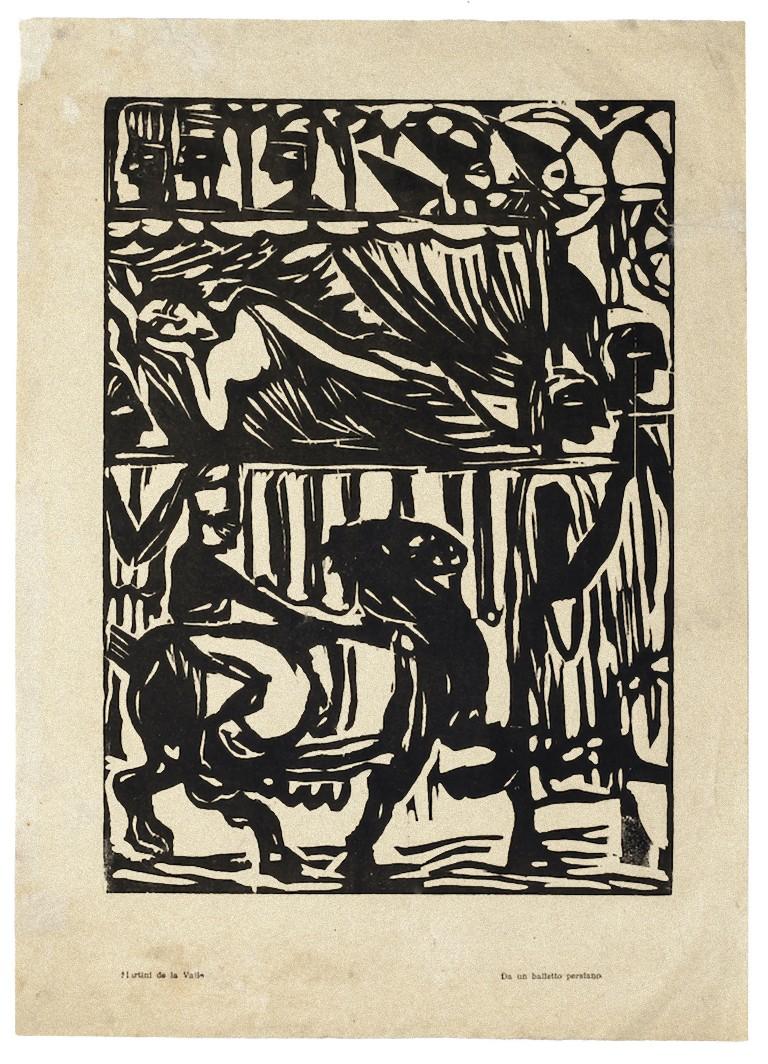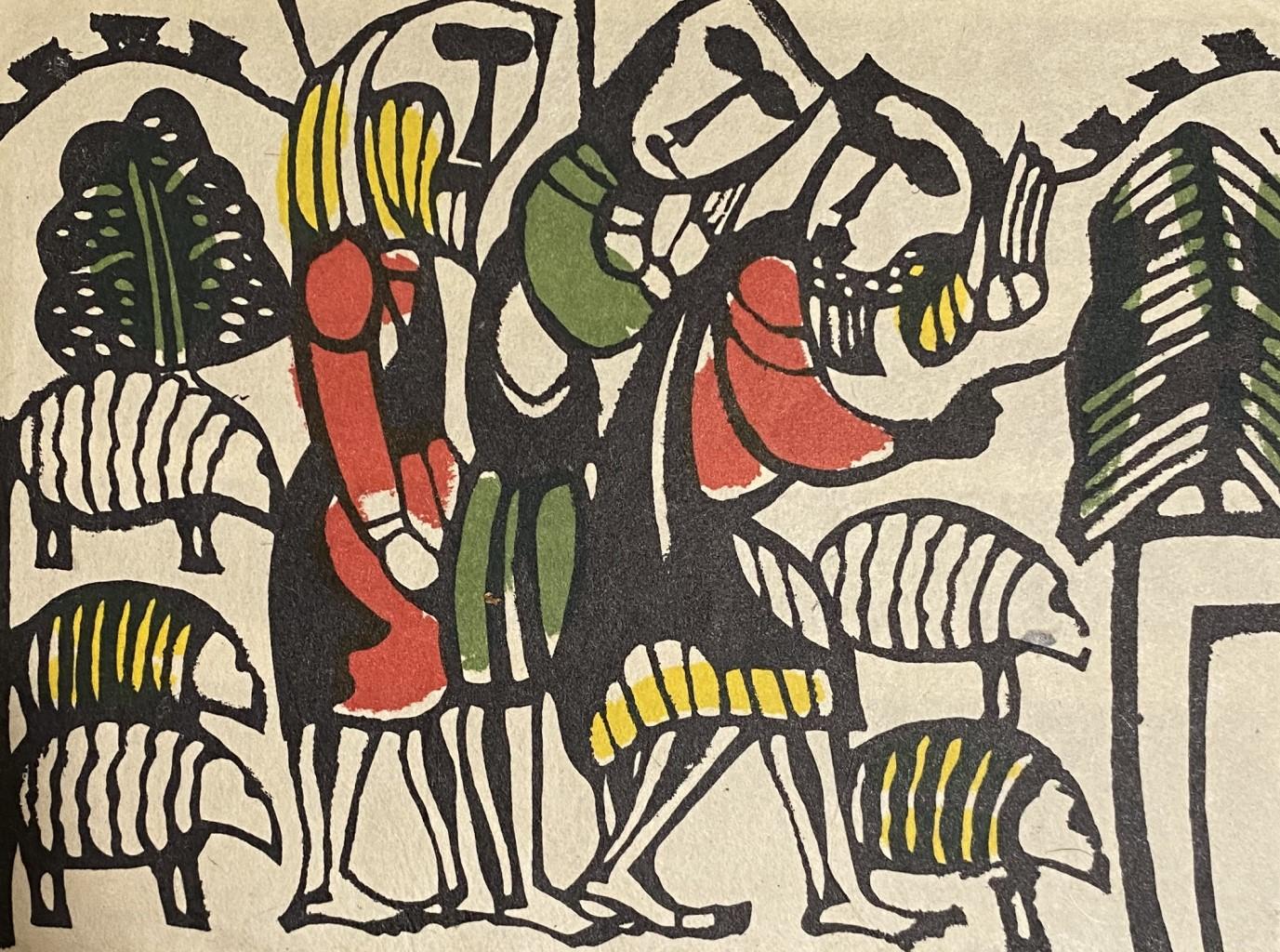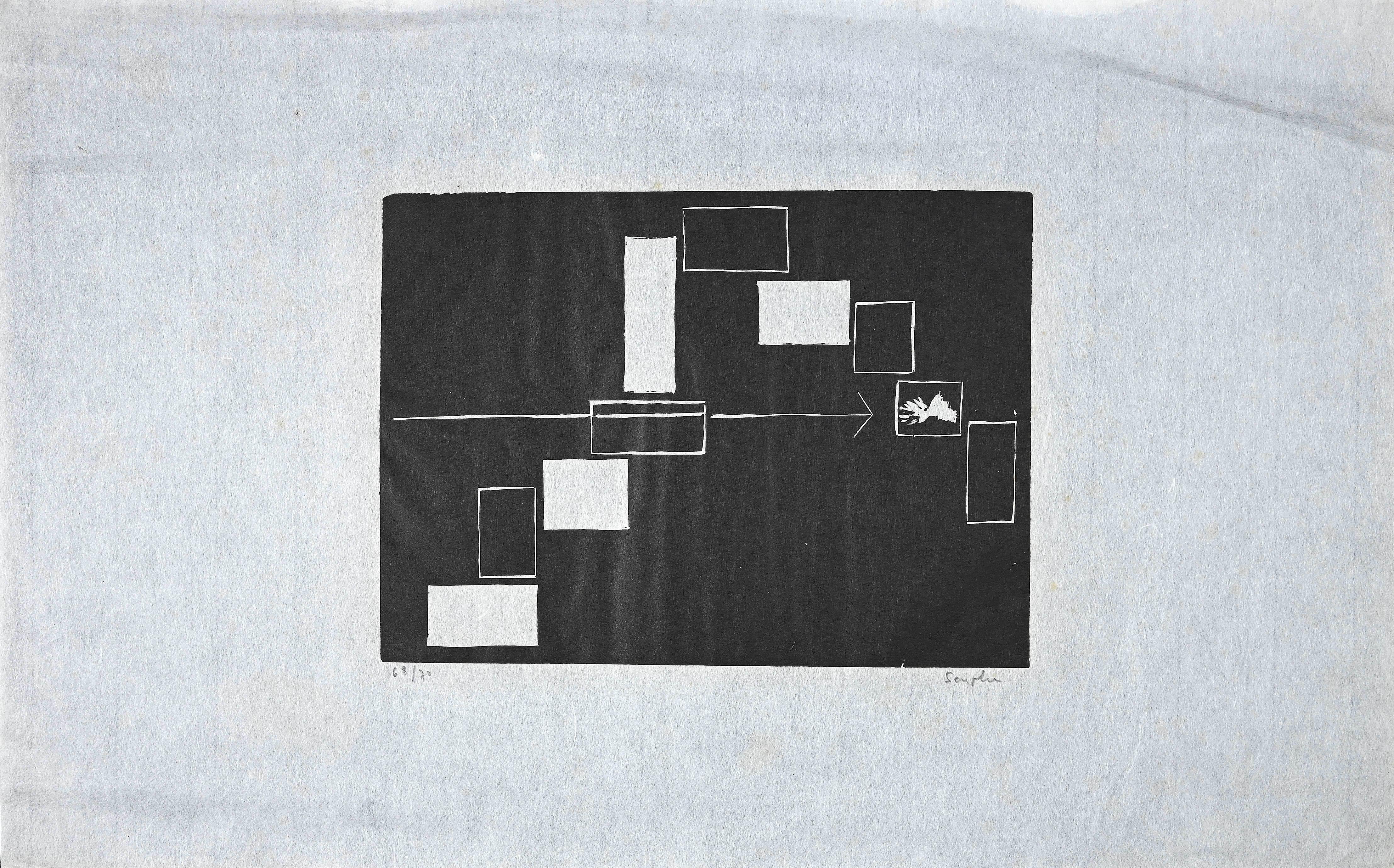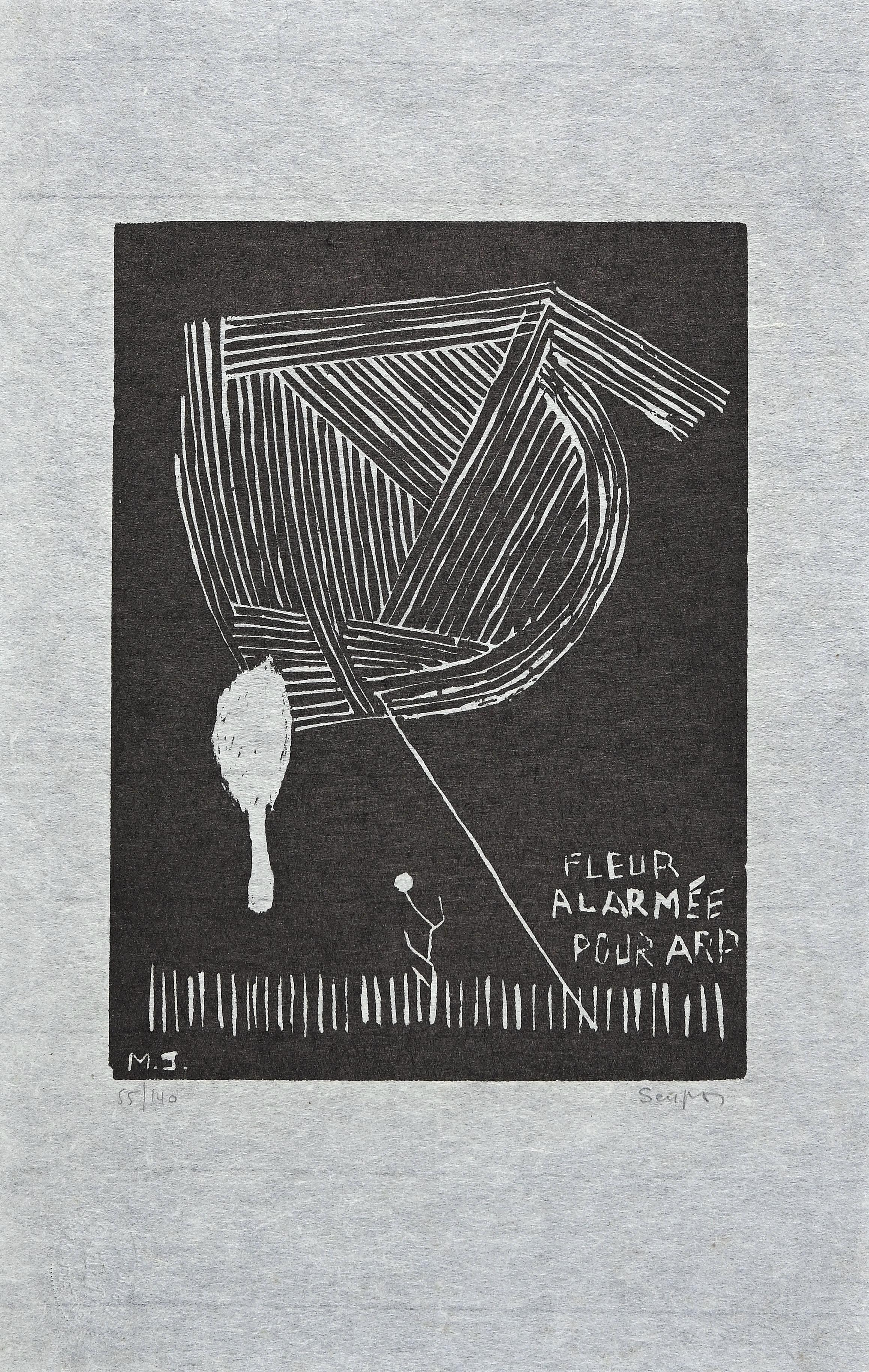Items Similar to Ascension
Want more images or videos?
Request additional images or videos from the seller
1 of 2
Maria DeguchiAscensionc. 1970s
c. 1970s
About the Item
Etching and aquatint on Arches France paper
Signed, titled, and editioned in pencil by the artist
Edition: 60 of which this numbered 23/60
Image: 19 3/4 x 13"
Plate: 9 7/8 x 7 7/8"
Deguchi studied in Paris at Friedlaender Atelier.
- Creator:Maria Deguchi (1928 - 1998, Vietnamese)
- Creation Year:c. 1970s
- Dimensions:Height: 9.88 in (25.1 cm)Width: 7.88 in (20.02 cm)
- Medium:
- Period:
- Condition:
- Gallery Location:Fairlawn, OH
- Reference Number:
About the Seller
5.0
Recognized Seller
These prestigious sellers are industry leaders and represent the highest echelon for item quality and design.
Platinum Seller
These expertly vetted sellers are 1stDibs' most experienced sellers and are rated highest by our customers.
Established in 1978
1stDibs seller since 2013
712 sales on 1stDibs
Typical response time: 1 hour
Associations
International Fine Print Dealers Association
- ShippingRetrieving quote...Ships From: Fairlawn, OH
- Return PolicyA return for this item may be initiated within 10 days of delivery.
More From This SellerView All
- Impression BBy Toshi Yoshida 1Located in Fairlawn, OHImpression B Color woodcut, 1959 Signed and dated lower right (see photo) Titled lower left (see photo) A trial proof, prior to the edition of 100, signed and numbered Condition: Excellent Image size: 14 1/2 x 9 3/4 inches Provenance: Estate of the artist by decent to his heirs "Printmaker and painter Toshi Yoshida was born on July 25, 1911, into the respected Yoshida family of artists of Tokyo, Japan. Father Hiroshi was a celebrated landscape painter and printmaker, and mother Fujio established herself as the first female Yoshida artist as well as an Abstract artist later in her career. Younger brother Hodaka was an Abstract printmaker whose style, completely separate from his family's historic traditional bent, later influenced Toshi. Hodaka's wife Chizuko would become a pioneering female Japanese artist whose own exploration of Surrealism and Abstraction challenged the status quo. Toshi, however, as the eldest sibling, was expected to follow in his father's footsteps, and from an early age he was trained by Hiroshi in his studio. Unable to attend formal schooling due to the polio-induced paralyzation of his leg, Toshi would instead help with his family's printmaking studio and go on sketching trips with Hiroshi. As he got older, these trips would include India and Southeast Asia, working from morning to night taking night trains to get from one destination to another. Among Toshi's favorite subjects were the animals he discovered along the way. However, these trips ended as Japan entered military dictatorship in the mid 1930s, and artists whose work showed signs of Western influence were barred from exhibiting. At this time, Toshi left Japan for China and Korea, where he would remain for the duration of the war. He stuck to patriotic themes to remain in business, and after the end of World War II, as Japan struggled to recover from wartime economic depression, he earned his living creating traditional Japanese woodcut landscapes...Category
1950s Abstract Abstract Prints
MaterialsWoodcut
- Poem 71-25 (Me)By Haku MakiLocated in Fairlawn, OHPoem 71-25 (Me) Color woodcut with cement mold embossing, 1971 Signed, titled and numbered in pencil (see photos) Edition 100 (55/100) (see photo) Signed with the artist's stamp lower right of image (see photo) COVER IMAGE, The Life and Works of Haku Maki, Daniel Tretiak, 2007, hence an imnportant print by the artist Conditon: Excellent Never framed Colors very fresh and vibrant Soft folds in the small upper margin (usual) Image size: 30 x 19 1/4 inches Reference: Haku Maki No. 942 Haku Maki (1924-2000) Born in Asomachi, Ibaraki prefecture, in 1924, Haku Maki 巻 白 served in the WWII before becoming a high school teacher in 1950. Around this time he began to produce his mixed media-prints. While his process began with carving a woodblock, he would the add cement around the carved areas. Once the cement had dried, he would carve over his original lines. This process produced the deep embossing so characteristic of his works. In terms of subject matter, Maki explored abstracted Chinese characters, though also ceramics and persimmons later in life. After 1960, he began to add spots of color to his compositions. A master of modern Japanese abstract printmaking, Maki's work can be found in the collections of the Museum of Modern Art and the British Museum. “The artist was born with the name Maejima Tadaaki in 1924 in the small town Asomachi in the Ibaraki Prefecture of Japan. He graduated at Ibaraki Teachers' College and became vice-principal of an elementary school there. In 1945 he was in a special squadron of kamikaze pilots and his life was to be ended. However, with the surrender of Japan on August 14, 1945 his life was spared, and he became a teacher at a high school. He studied printmaking at the Modern Print Research Society with Koshiro Onchi andi, in 1950 he changed his name to Haku Maki. His work has a few characteristic design elements for which he became famous - deep embossing and the use of distorted Chinese characters. Maki developed his own process of relief printmaking, applying mixed media printing techniques. The artist first carved a conventional woodblock. Then he put cement around the carved areas. When the cement had dried out, Haku Maki carved and chiseled the cement into the shape he wanted to have. Then a wet, double-layered paper was used for the printing. Thus prints made in this technique show strong embossing. Haku Maki's works look nearly three-dimensional. In 1969, Maki designed 21 block prints to accompany the book Festive Wine, ancient poetic songs from the 5th to the 9th century and published by John Weatherhill, Inc. His later works are composed of a broad range of variations on the use of calligraphic shapes. In later life health problems made it often difficult for him to create his art works and he was assisted by his wife in the printing of the editions. Haku Maki died of cancer in 2000.” Courtesy Annex Galleries References: James A. Michener, The Modern Japanese Print...Category
1970s Abstract Abstract Prints
MaterialsWoodcut
- Ecce Homo VIIBy Werner DrewesLocated in Fairlawn, OHEcce Homo VII Woodcut, 1921 Signed, titled, and dated in pencil by the artist One of only three known impressions Created while the artist was studying at the Bauhaus in Weimar, Germ...Category
1920s Expressionist Abstract Prints
MaterialsWoodcut
- Festival No. 6By Katsunori HamanishiLocated in Fairlawn, OHFestival No. 6 Color woodblock, 2002 Signed, titled and numbered in pencil (see photos) Edition: 50 (10/50), see photo Provenance: Ninion and Sheldon Landy Collection, Donors to A...Category
Early 2000s Abstract Abstract Prints
MaterialsWoodcut
- Plate 12By Wassily KandinskyLocated in Fairlawn, OHPlate 12 From: 10 Origi, 1942 Signed in the block with the artist's initials lower left (printed) From: 10 Origin Not from the First edition 100, published by Allianz-Verlag, Zurich,...Category
1970s Expressionist Abstract Prints
MaterialsWoodcut
- Festival No. 6By Katsunori HamanishiLocated in Fairlawn, OHFestival No. 6 Color woodblock, 2002 Signed, titled and numbered in pencil (see photos) Edition: 50 (10/50), see photo Provenance: Ninion and Sheldon Landy Collection, Donors to A...Category
Early 2000s Abstract Abstract Prints
MaterialsWoodcut
You May Also Like
- Folclore Carsico - Original Chalcography and Woodcut By L. Spacal - 1969By Lujze SpacalLocated in Roma, ITImage dimensions: 12 x 18 cm. Hand titled, numbered and signed on the lower margin. Edition of 35 prints. Colored chalcography and xilograph. Excellent condition.Category
1960s Abstract Abstract Prints
MaterialsWoodcut
- Persian Ballet - Woodcut by Arturo Martini - 20th CenturyBy Arturo MartiniLocated in Roma, ITPersian Ballet is a woodcut on ivory-colored, realized at the beginning of the XX century by the Italian artist Arturo Martini (Treviso, 1889 - Milan, 1947). On the lower margin, th...Category
20th Century Figurative Prints
MaterialsWoodcut
- Surreal Composit - Woodcut by Sadao Watanabe - 20th CenturyBy Sadao WatanabeLocated in Roma, ITSurreal Composit is an original woodcut, hand colored, on paper realized by Sadao Watanabe for College Women's Association of Japan Student Travel grant fund. Specially woodcut wit...Category
20th Century Modern Abstract Prints
MaterialsWoodcut
- L'échelle - Woodcut by Michel Seuphor - 1969Located in Roma, ITHand signed. Edition of 70 specimens. Good conditions. Image Dimensions: 23 x 17 cmCategory
1960s Abstract Abstract Prints
MaterialsWoodcut
- Patrouille - Woodcut by Michel Seuphor - 1969Located in Roma, ITHand signed. Artist's proof. Good conditions. Image Dimensions: 16 x 31 cmCategory
1960s Abstract Abstract Prints
MaterialsWoodcut
- Fleur Alarmée pour Arp - Woodcut by Michel Seuphor - 1969Located in Roma, ITHand signed and numbered. Edition of 140 prints. Image Dimensions: 20x15 cm. Good conditions.Category
1960s Contemporary Abstract Prints
MaterialsWoodcut
Recently Viewed
View AllMore Ways To Browse
Arches France
Abstract Woodcut 1970s
Sofia Vintage
Wassily Signed
Dubuffet Lithograph
1974 Art Miro
Joan Miro Composition
Gemini Print
Joan Miro Signed Framed Lithograph
Alexander Calder 1969 Lithograph
Xxe Siecle
Alexander Calder Mobile
Paris Gravure
Spanish Fresco
Agam Signed
Formulation Articulation
Lewitt Prints
Alexander Calder Derriere
